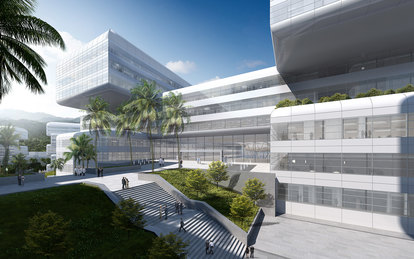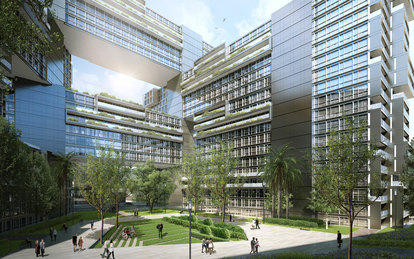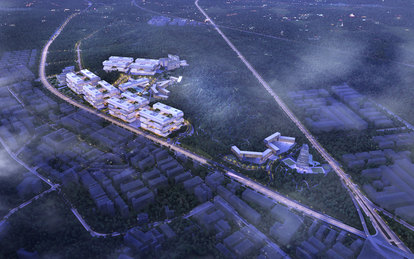Peng Cheng Laboratory, Shibilong Park Phase I
Among the verdant mountains of Shenzhen, the provincial government created a design competition that envisions an immersive research community that will become an international center for technology and innovation, and a national model for future development.
Client
深圳工务署
Location
Shenzhen, China
Markets/Services
Academic Research, Architecture, Campus Planning, Commercial Office Buildings, Corporate Headquarters & Campuses, Corporate Research & Development, Lab Planning, Landscape Architecture, Science & Technology, Corporate & Commercial
A city of 13 million on the central coast of China’s Guangdong Province, Shenzhen is a thriving global technology center, dubbed by some as “China’s Silicon Valley.” Peng Cheng Laboratory is planned as the first of four provincial laboratories—a world-class research community for technology and innovation, one focused on network communications, artificial intelligence, cybersecurity, robotics, and quantum research.
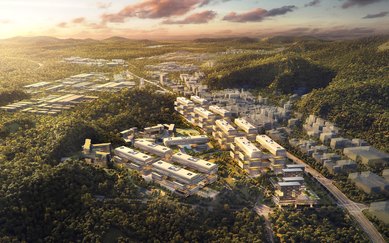
As city within a city, Pengcheng Laboratory seeks to blend this advanced scientific environment with Shenzhen’s natural environment of mountainous ridges and forested foothills. This “hill garden city” will promote collaboration and support discovery as a highly sustainable community built on meaningful work, opportunity for interaction and natural beauty.
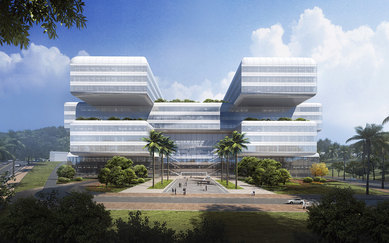
Just as scientific discovery involves finding solutions to puzzles, the design of Peng Cheng Laboratory is inspired by Kongming interlocking puzzles.
Each laboratory building comprises flexible research lab modules of varying sizes and scales, grouped by system operation. These module groups, in turn, nest and stack upon one another to create an interlocking collaborative complex. Residential towers also are clustered into interlocking communities, although more organic to follow the contours of nature.
Research teams are planned around their core technology platforms and grouped in a three-story Research Lab Center, providing each team a space that is both secure and connected for collaboration. Even in these controlled spaces, labs feel open and light-filled, with visual connectivity to colleagues and nature.
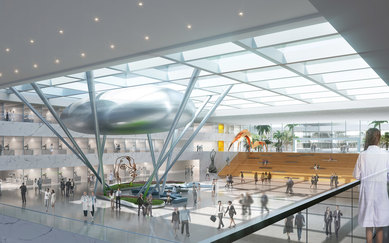
Labs are arranged around large central atria with generous floor area for exhibition space, dining, and social gathering.
Each Lab Center has an exterior terrace on the roof of the lab below, so researchers can access outdoor space and mountain views without leaving the security of the facility. The lab building frame is a modular chassis with technical spaces that respond quickly to the development of new research modalities and equipment. SMART technologies maximize efficiencies and sustainability.
Residential areas are located within walking distance of the Research Lab Centers, connected by landscaped parks that encourage socialization and recreation. The human scale prioritizes walking and cycling to create a “green travel environment,” with shops, restaurants and other amenities clustered along pedestrian-scale walking streets. The urban greenspaces create an organic park system that serves as a green transition from the natural forested mountainsides.
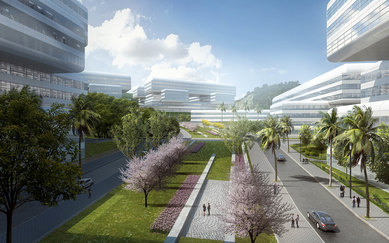

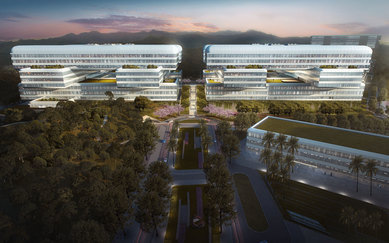
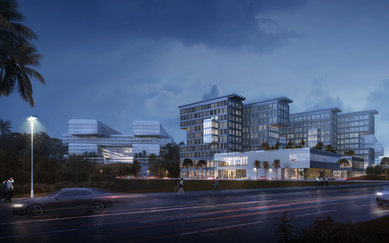
Taking inspiration from the natural landscape, Peng Cheng Laboratory creates an environment that speaks to the human spirit and supports the rise of Shenzhen as China’s capital of scientific and technological innovation.
